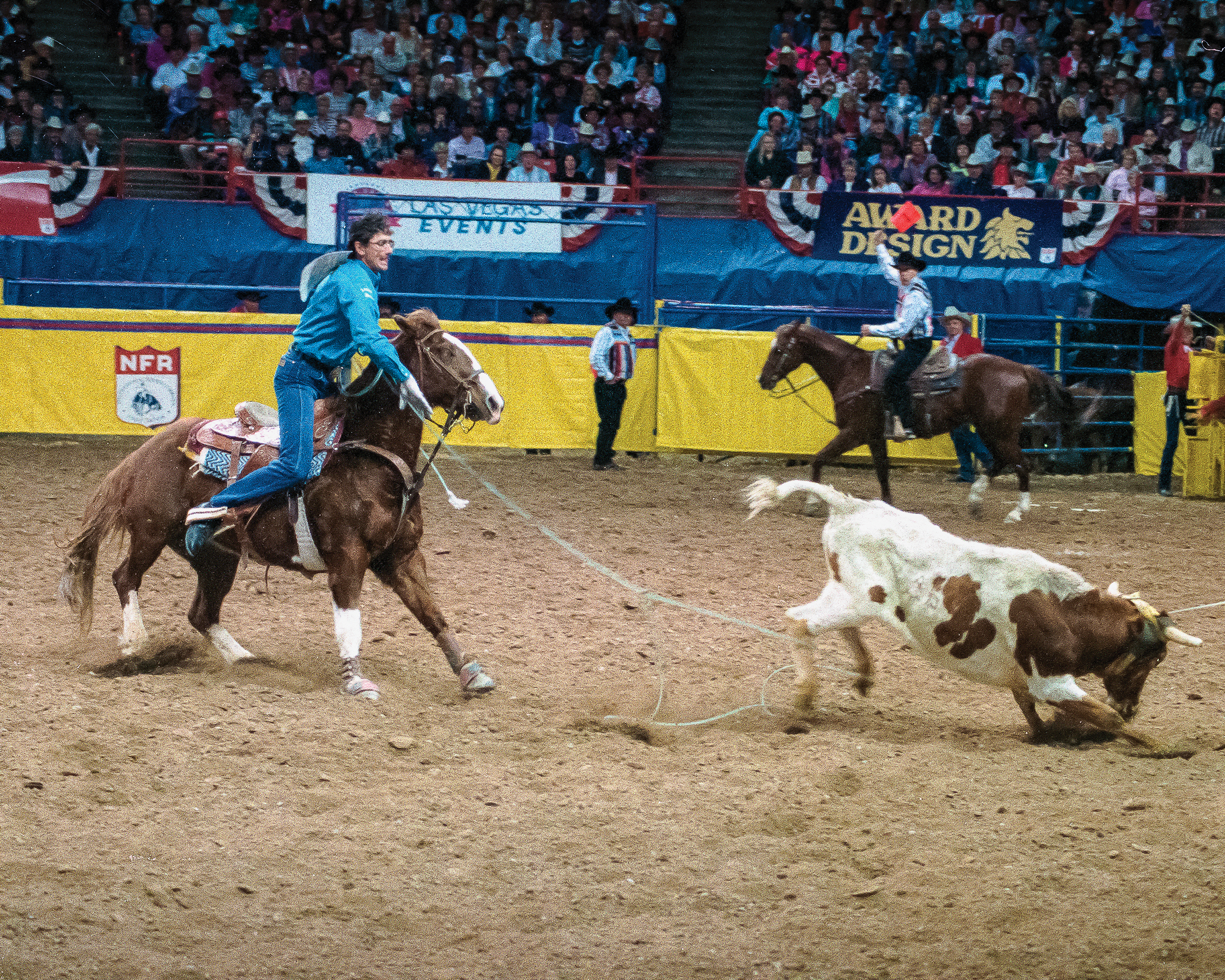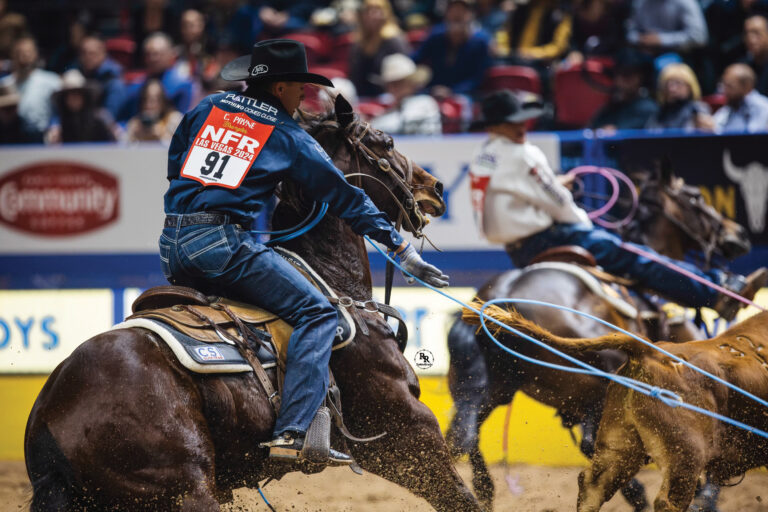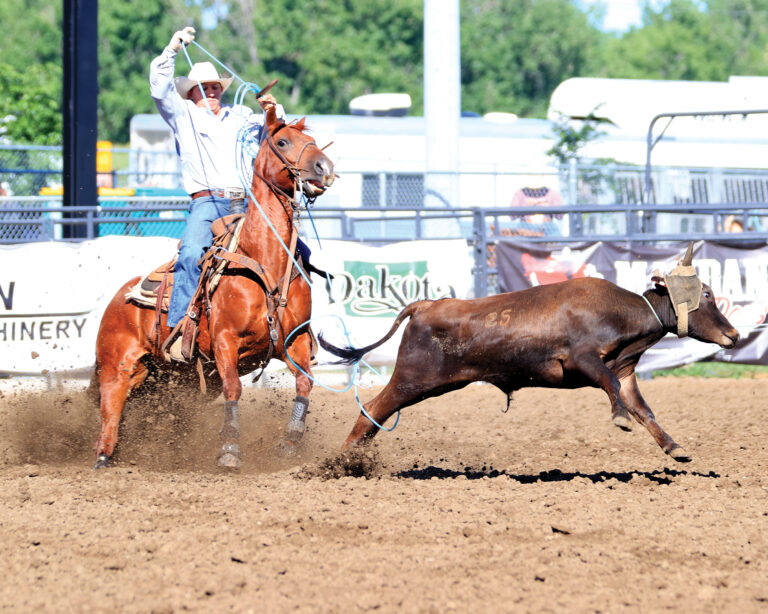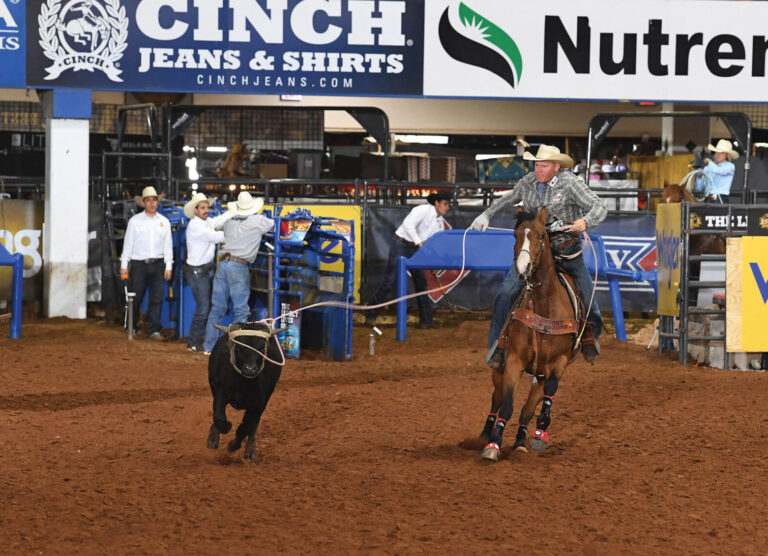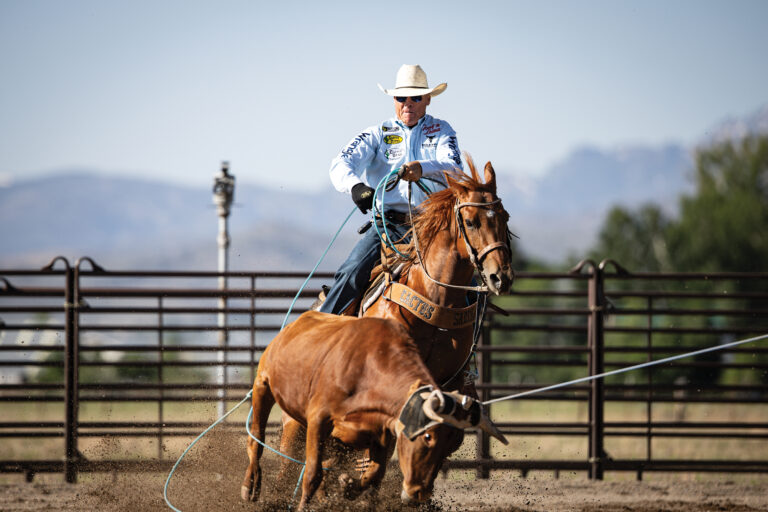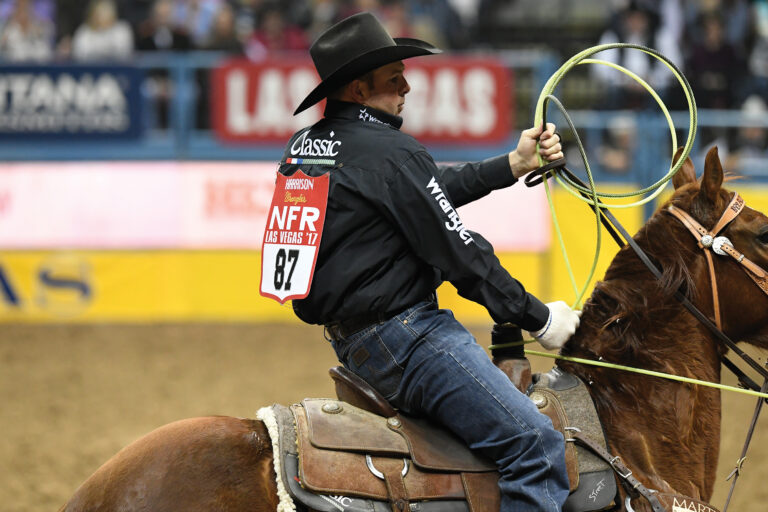There are so many things people do differently during a run—like the characteristics of your swing, how you feed your rope, how close you feed your hands when you throw, how long your bridle reins are or how you pick your horse up for the corner—and these little compensations all have a cause and effect.
Being a teacher, you look for these small details and learn to see the signs. Ropers are sometimes compensating, and when they do that, they add moves together that an observer can recognize as a pattern. For instance, almost all heeler gets their slack at the same place when they make their throw. But not everybody gets to that spot the same way.
LISTEN: Understanding Every Aspect of the Run
Some guys, like Al Bach, always said you needed to feed your rope to your delivery point. If you watched Rich Skelton ride in the box, he had a big loop, but didn’t have much between his hands. He’d already taken a lot of the slack out between his hands, so he took one of the steps out of play.
Then there are guys like me. I start with a pretty small loop, but there’s a lot of slack between my hands. So when I bring my rope up, I feed my loop a lot, including on the last swing, to get to the same delivery measurement between my hands.
Everybody has a little different compensation, including the guys who feed on their throw. But we all get to that similar spot with the distance between our hands, because we want to maximize our loop size for our catch. And we want our hands close together, so our roping hand is in correct position to pull our slack and go to the horn.
None of these compensations are right or wrong, and we all need to find what works for us. But the different styles do have cause and effect that can be analyzed. Al Bach’s way of feeding all the slack out from between his hands early means he’s swinging a big loop. That takes more power to get the speed on your rope, so guys who do it that way need to be physically strong.
READ: The Swing Bone’s Connected to the Delivery Bone
Then you have people who keep their loop smaller, and feed it right before they throw. You can swing a smaller loop faster and get more speed on it, then feed it on your last swing and utilize how the swing and throw come together right there, and get your measurement right.
Feeding on your throw has a little compensation to it, because if you feed as you’re delivering, it turns the bind you have on the rope loose. And what’s between your hands—which is actually a coil with a full twist in it—turns your bottom strand to the left when you turn that bind loose. Some like that feel, because it makes the loop go under the feet.
Along those same lines, some heelers like their ropes with a lot of backswing, which has the same effect. That’s another compensation in how the rope lays like that, and plays into some people’s strategy for catching the feet.
How you hold the bridle reins or the position that your left arm, hand and wrist are in when you pick your horse up going down the arena as you start the turn comes into play here, too. If your bridle reins are even on both sides coming into your hand, if you take your elbow and go left with it in a 90-degree angle, you would actually have twisted and shortened the right rein a little bit. That can be counterproductive to how you want your horse’s head and neck shape to be.
READ: Knowing Your Tendencies; Working on Your Weaknesses
But if you simply change that position and put your elbow into your left ribs and twist your wrist to the left, now you shorten the left rein and the left rein is up against the horse’s neck and has twisted it a little bit shorter. In that position, you’ve basically now changed the head and neck position with the simple technique of how you picked your horse up.
The whole point here is that everything you do has a cause and effect on how your horse’s shoulders, head and neck are going to be heading into the turn, and how his body aligns and frames up as you come into the corner. Every compensation has a cause and effect that impacts your run. Watch the video, and break it down.
—TRJ—




